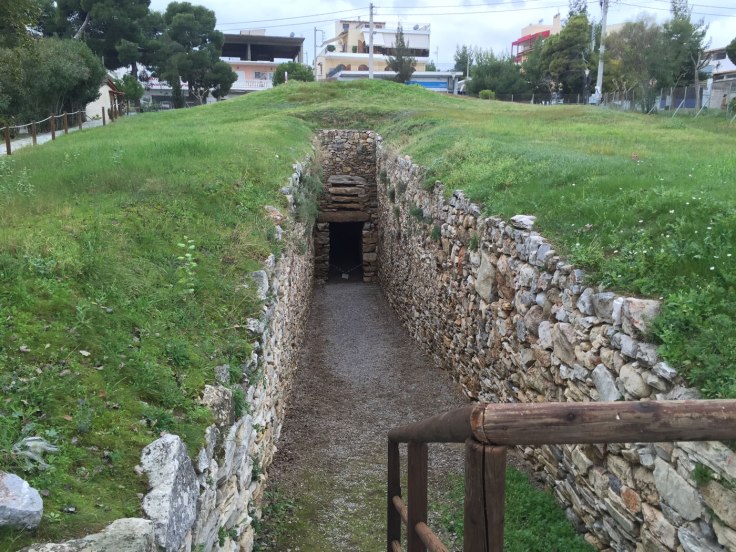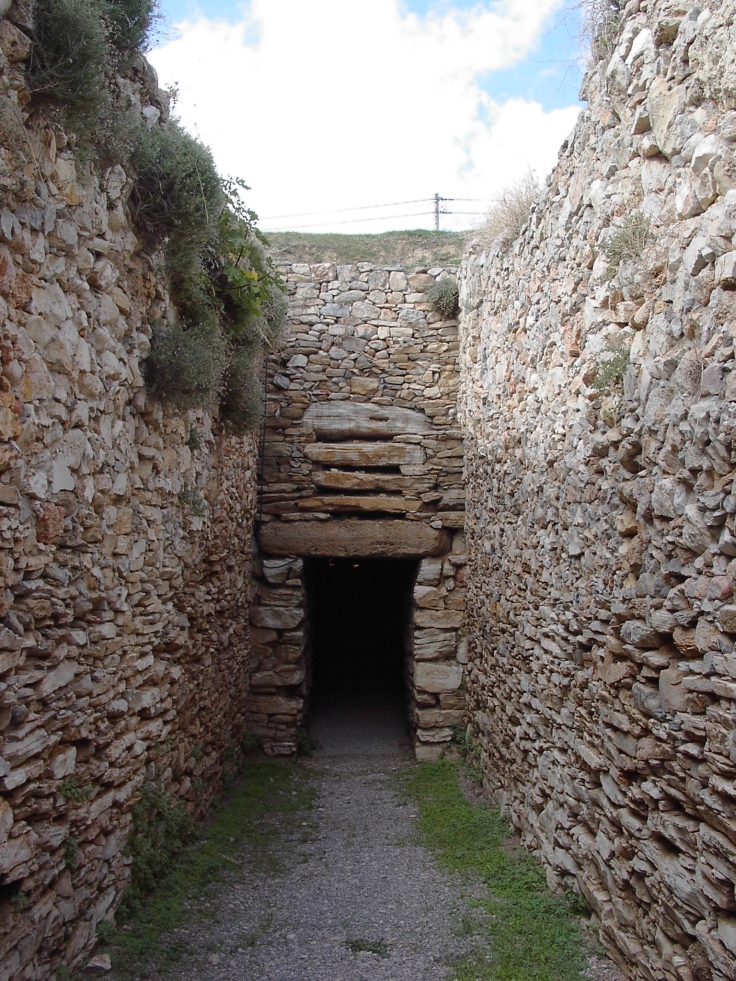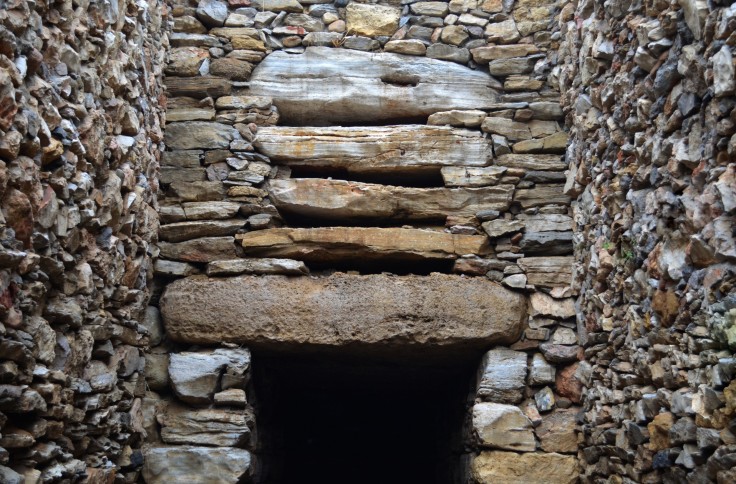The Tholos Tomb of Acharnes (or Menidi, as it is known in the bibliography) was excavated in 1879 by the German Archaeological Institute of Athens. It is the best preserved Mycenaean vaulted tomb of Attica. It dates back to the 13th century. B.C.

It was built for members of a prominent family, presumably the lord’s. It is covered with a tumulus, which is kept perimetrically with a low wall. It consists, as usual, from the road, the mouth and the chamber. The downhill road (27.72m long, 3m wide) led through the orifice (3.55m deep, 1.55m wide) to the burial chamber.

The chamber has a circular plan, with a diameter of 8.35 m and a honeycomb shape. The walls are converging gradually towards the top, where the hole is blocked by a large plate, the clavicle, at a height of 9m. from the floor. All the walls of the tomb are made of harsh stone. The lintel of the orifice consists of three successive monoliths. Above this, the relief triangle is internally identified, while externally, an original system has been adopted by horizontally placing four smaller stones with spaces between them.

Although the tomb had most likely been snatched from antiquity, it contained many findings, such as gold, silver, bronze, amber, glass-mass and faience jewelry, semiprecious stone seals, a helmet made of boar tusks, bronze weapons and a multitude of ivory items. Of these, two lyres and a cylindrical compass with embossed rams stand out.
There also have been found clay and stone vases. Notable are four amphorae from Canaan, which bear witness to contacts with the southeastern Mediterranean. The finds from the embankment fill of the tomb road indicate that the ancestors were honored in the later years until the 5th century. B.C. The finds from the Tholos Tomb of Acharnes are exhibited at the National Archaeological Museum.
(Source: http://odysseus.culture.gr/h/2/gh251.jsp?obj_id=19836)
This tomb is in excellent condition and has been preserved wonderfully. It is open to visitors, in a park that keeps the surroundings green and well-groomed.

NovoScriptorium: The findings from the tomb lead us to some obvious and interesting conclusions;
a) Mining and processing of ores such as gold, silver, bronze was common for the Myceneans. This implies the use of corresponding tools but knowledge of Chemistry and Metallurgy as well.
b) Processing of amber, semiprecious stones, glass, faience, tusk and ivory was common as well, which also implies the same as above.
c) The Myceneans were already using compass in the 13th century B.C.. Knowledge of -at least basic- Physics is definetly required for this.
d) The Myceneans were familiar with sea travel and commerce in the Mediterranean -and not only there- already in the 13th century B.C..
Please check the following links
https://novoscriptorium.com/2019/04/08/myceneans-in-western-anatolia/
https://novoscriptorium.com/2019/02/23/ancient-mediterraneans-in-scandinavia-bronze-age-trade/
https://novoscriptorium.com/2019/02/19/myceneans-undoubtedly-traded-with-northern-europe-bronze-age/
https://novoscriptorium.com/2019/02/15/a-mycenean-link-to-bronze-age-britain/
https://novoscriptorium.com/2019/02/15/3600-year-old-swedish-axes-were-made-with-copper-from-cyprus/
e) The Mycenean culture enjoyed music very much, as the two lyres found in the tomb show
f) It is clear that their building knowledge was wide, where one must include Statics, Mechanics, Materials and a minimum knowledge of Geometry and Mathematics.
Please check the following links
https://novoscriptorium.com/2019/04/19/mycenean-technology/
https://novoscriptorium.com/2019/01/25/micro-technology-in-the-mycenean-period/
g) The ‘Aegean-style’ finds of the same era (13th century B.C.) which have been found, in great numbers, in the Near East indicate either colonization of the lands by ‘Aegeans’ or massive cultural influence of the ‘Aegean’ culture in the area. Please check the following posts
https://novoscriptorium.com/2019/08/06/the-philistines-an-aegean-population/
https://novoscriptorium.com/2019/02/15/the-aegean-mycenean-origin-of-the-philistines/
We conclude this post with a video of the actual monument:
Research-Selection-Comments for NovoScriptorium: Isidoros Aggelos


Leave a comment